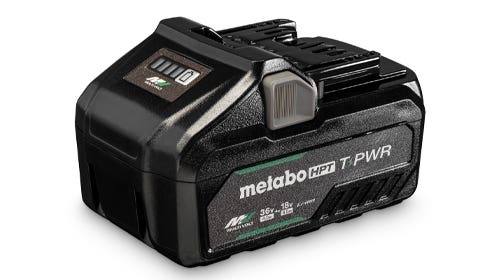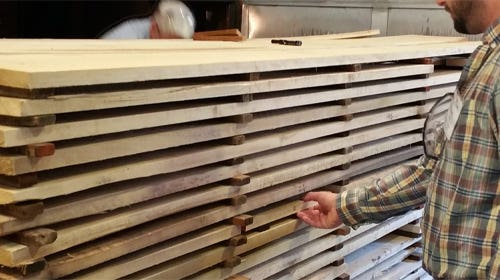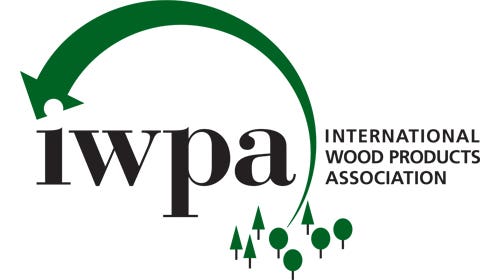The upper Midwest is losing most of its ash
The Emerald Ash Borer (EAB) is currently responsible for the destruction of tens of millions of ash trees in 30 states, according to the U.S. Department of Agriculture.
The Emerald Ash Borer (Agrilus planipennis, or EAB) is currently responsible for the destruction of tens of millions of ash trees (Fraxinus americana) in 30 states, according to the U.S. Department of Agriculture. This has had a regional impact on lumber supplies, according to hardwood dealers interviewed by Woodshop News.
“In the Midwest, at least where I live in northwest Illinois, and southern Wisconsin, all throughout that area, the EAB has been almost 100 percent lethal. There are almost no decent logs left,” says Michael Johnson, owner of Johnson Creek Hardwoods, a sawmill and forester in Mount Carroll, Ill.
“I’ve planted about 2,000 ash trees over the years, and every one of them is dead. We saw a lot of ash because we have no trouble selling it as a high-grade lumber for furniture and cabinets, but I am no longer able to even get big yard tree logs. They’re just all dead, and they’ve been dead long enough now so that they’re pretty wormy, and the bark is off, and the wood is splitting. So, it’s been really serious around here.”
Conversely, Luke Zale of Rare Woods U.S.A. in Mexico, Maine, hasn’t experienced shortages.
“As far as supply, we haven’t really seen any issues. We’ve been able to resupply even as recently as three months ago without any real tribulation. As far as sales, it’s still a very popular wood,” says Zale.
“But we do have a unique situation here where we over buy for every species just to have it on hand and haven’t had the need to resupply in a while. I’ve been able to get 4/4, 5/4 within the past three months without any trouble.”
Bob Laurie of L.L. Johnson Lumber & Johnson’s Workbench in Charlotte, Mich., the first state to detect the EAB in 2002, says the company has had to reach further out to source ash, but notes there’s not much demand for it.
“I’m still able to get it. It depends on where you’re at but there’s not much of it available in Michigan anymore. You have to keep moving south or east to find it. We can get it in southern Indiana, just not up here,” says Laurie.
“We actually don’t sell a lot of ash, and right now we’re selling a bit more of it to be thermally modified as an alternative to South American imported woods. I haven’t seen that people want it just because it’s being depleted.”
Matt Gilland of Superior Veneer & Plywood in New Albany, Ind., says ash veener isn’t a big seller, though he’s had a few inquiries recently.
“We’ve had a few calls on ash, and we’ve run a few jobs, but it’s been a pretty limited number. I’ve not run into trouble keeping it in stock, but I also haven’t talked to vendors who are slicing it and whether they’re having problems getting the logs,” says Gilland.
“We tell [customers] about what’s going on, but it’s not like they want to buy it because it might have value someday, which it might, I have no idea, but we’re not getting calls from people saying they want ash because it might disappear.”
Retailers said 4/4 FAS ash was selling for about $4.50/bf.
This article was originally published in the September 2023 issue.






